Automotive Lighting checks are performed with each oil change.
Exterior
Description:
Your vehicle’s exterior lighting includes the headlights, parking lights, marker lights, fog lights (if equipped), turn signals, hazard flashers, brake lights, center high-mounted stoplight (CHMSL), taillights, backup lights, and various lamps.
Purpose:
The exterior automotive lighting provides night vision, the ability to see in foggy conditions, and a means to signal other drivers about driving intentions and emergencies.
Maintenance Tips/Suggestions:
We require our technicians to inspect your vehicle’s exterior lights at every oil change to guarantee your safety. Having the alignment of your vehicle’s headlights checked yearly is recommended to ensure the proper positioning of the beams. There are several reasons your vehicle’s exterior lighting may not function properly.
When one light in the circuit is not working while the others are functioning correctly, that is likely due to a single “bad bulb.” This is usually seen with turn signal flashers. If all the exterior lights are not working (except the headlights), the problem is likely a switch, fuse, or faulty component affecting the whole circuit.
For example, when both turn signal flashers do not work, that is likely a faulty component affecting the circuit, but if your turn signals only flash on one side, it’s most likely just a bad bulb. You can reference your owner’s manual for the locations of your vehicle fuses and turn signal flashers if you are experiencing one of these problems. D & R Car Care’s highly qualified service professionals can diagnose and repair issues involving your automotive lighting circuits.
High Intensity Discharge
Description:
High-Intensity Discharge (HID) lights generate brightly shining light from a capsule inside the electric arc containing Xenon gas. Due to the use of Xenon gas, this type of light is also referred to as Xenon light. HID lights will usually shine with a blueish tint when lit.
These significantly brighter bulbs produce a whiter light compared to the standard halogen lights. HID lights began appearing on luxury cars but are becoming more common as standard equipment.
Purpose:
HID lights are a newer headlight technology. The benefit of using this technology is a brighter light to provide better visibility at night, improving nighttime driving and safety. Having HID lights in your vehicle also uses less electricity than their halogen counterparts, reducing the electrical system load of the vehicle. With HIDs projector-like technology, it is becoming more common to see their high-tech appearance in more of today’s vehicle designs.
Maintenance Tips/Suggestions:
Frequently checking if the HID headlights are working correctly and replacing any nonfunction bulbs is the most common maintenance practice. Replacing the HID light requires you not to touch the bulb itself because your skin’s oil can cause damage, resulting in an inoperative light.
HID lights must meet requirements for lighting safety for a specific vehicle make, year, and model. If you want your vehicle’s halogen light replaced with HID technology, finding proper bulbs/conversion kits, including being installed for legal street use, is essential. The HID conversion process can be complicated due to the extensive research necessary. Asking a trained D & R Car Care professional for more information can ensure your conversion is done properly!
Interior
Description:
The car interior lights include instrument panel lights, dome lights, map lights, door courtesy lamps, rear cargo lamps, and any other miscellaneous lights that may illuminate features or areas of the car interior.
Purpose:
The car interior lights provide illumination of instruments for nighttime driving and light the interior as needed.
Maintenance Tips/Suggestions:
Your dashboard is where you will find the warning lights. It is vital to become familiar with what the warning lights may represent and can be found in the owner’s manual for further explanation. It can be common to see a number of the lights turn on when the vehicle starts, but they should turn off immediately. If they stay on or turn on while driving, that indicates a potential problem.
Instrument issues generally are due to two reasons. Either the instruments don’t work, or they display inaccurate readings. Referencing the owner’s manual for the locations of the fuses. This could help determine if the cause is due to the current fuse.
If your fuses are okay but you still have these warning lights on in your vehicle, have a qualified service technician at D & R Car Care inspect your vehicle’s instruments.
Sockets
Description:
Sockets serve as receptacles for light bulbs, with a body usually made from metal or plastic. The vehicle’s wiring harness attaches to the terminals connecting to the light bulb, with either one or two filaments.
When sockets have a plastic body, they will likely have a separate ground wire to complete the lighting circuit. When the sockets have metal bodies, they often use the socket’s body as the ground connection.
Purpose:
Sockets provide secure connections from the wiring harness to the light bulbs. The sockets used on today’s cars also have special seals to prevent water from entering the socket and causing corrosion.
Maintenance Tips/Suggestions:
A majority of your vehicle’s bulbs are simple to replace. In your owner’s manual, you will find specific numbers for the bulbs your vehicle requires. It may explain where and how to access a socket as well.
When you need to access a socket, it may require you to remove the screws that keep the light housing in place. Twist the socket counterclockwise about a one-quarter turn to remove it (some sockets have arrow markings showing which way to turn). Metal sockets usually require unsnapping them from the housing.
These specifications can be helpful when needing to replace exterior automotive lighting. It is always important to remember that if you are changing a halogen or high-intensity discharge lightbulb, never touch the bulb with your bare hands.
If you have interior or exterior automotive lighting problems and the bulbs and fuses seem OK, you must get your vehicle diagnosed and services by a highly qualified technician. D & R Car Care is a full-service auto repair shop with professionals capable of analyzing your automotive lighting problems.

